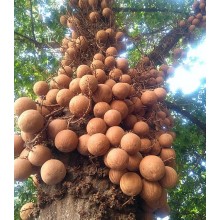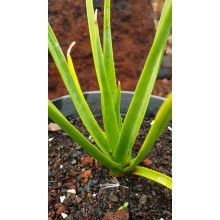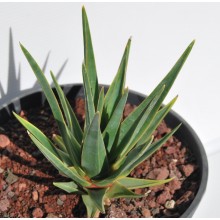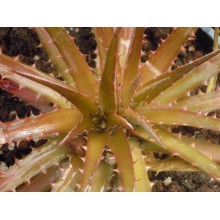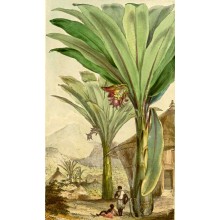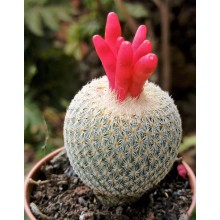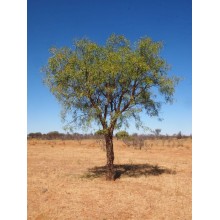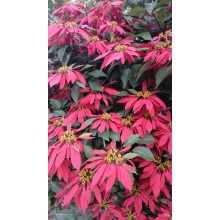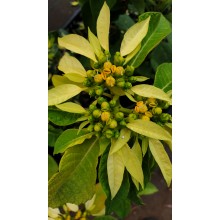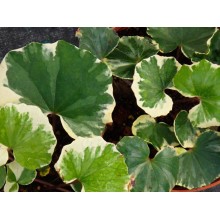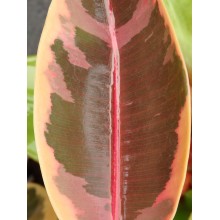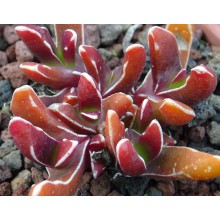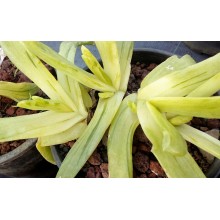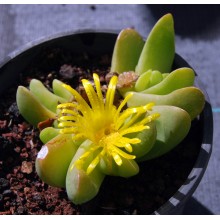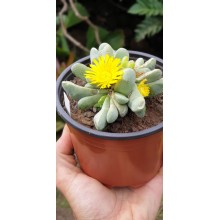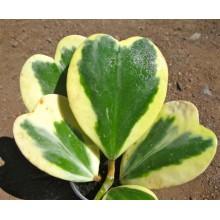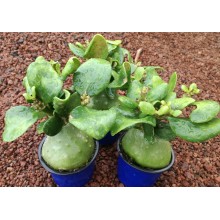Speciale Ci sono 77 prodotti.

Sotto-categorie
-
Piante resistenti al freddo
Questa è la nostra selezione di piante che possono resistere un po di freddo. Alcune piante solo resistono clima fresco e gelo leggero, ma alcuni altri sopportanno gelate forti nei climi più freddi. Tutti sono molto diversi, ma meritano di essere provate, perché tutte queste piante dall'aspetto tropicali hanno requisiti non tropicali. Essi sicuramente prospereranno all'aperto in climi mediterranei costieri, o in serra riscaldata leggermente dove il gelo non si accade. -
Piante rare
Questa è la nostra selezione di piante straordinarie. Sono tutti molto diverse e in qualche modo insolite. Ci sono piante aeree, banane rosse, pietre viventi, le piante con foglie nere, zig-zag cacti e tutti i tipi di piante accattivanti ed oggetti di conversazione. -
Piante variegate
Le piante variegate hanno foglie con strisce oppure sono macchiati con colori attraenti. La variegatura nelle piante avviene per molte ragioni. Più comunemente è un errore genetico che appare di tanto in tanto in natura. Una variegatura bianca è il risultato dell'incapacità di una pianta per la produzione di pigmenti in quella zona. Una produzione minore del pigmento clorofilla consentirà colori arancio, giallo e verde chiaro per apparire, o anche sfumature di rosa, rosso e viola. Queste piante sono più lenti rispetto ai loro parenti verdi e spesso più costosi. Offriamo Agavi variegati, Aspidistras variegati, Bromeliads variegati e un sacco di Succulente variegati.
-
Piante resistenti alla siccitá
In questa sezione, raggruppiamo quelle piante che si adattano alle condizioni aride o di siccità. Normalmente, la maggior parte di queste specie, coltivate in condizioni di asciutto, sono cerosi, succulenti, pelosi, appiccicosi, aghiformi ed ancora più piccole rispetto al resto.
In Piante resistenti alla siccitá si possono trovare tutte le specie con queste caratteristiche: Pithecellobium dulce, Ruta graveolens, Syzygium cordatum, Tamarindus indica e così via.
-
Couroupita guianensis - Cannonball Tree
Couroupita guianensis - Cannonball Tree
This extraordinaty exotic ornamental tree is a real people stopper. It profusely produces intensely fragrant red and pink flowers.
50,00 € -
Dracaena cinnabari
Dracaena cinnabari
The most extraordinary dragon tree is the one from the island of Socotra. Here we offer 4-5 years old seedlings.
83,40 € -
Dracaena cinnabari- LARGE
Dracaena cinnabari- LARGE
The most extraordinary dragon tree is the one from the island of Socotra. Here we offer 5-6 years old seedlings.
287,00 € -
Dyckia fosteriana rubra
Dyckia fosteriana rubra
This is a supreme clone of Dyckia fosteriana, with bronze coloured rosettes. It is a cold-resistant bromeliad from the rocky mountains of Paraná, in South Brazil.
19,50 € -
Ensete ventricosum - Abyssinian Banana
Ensete ventricosum - Abyssinian Banana
This "mountain banana" comes from high-elevation tropical Africa and bears enomous leaves with a solid red rachis. It grows well in warm temperate and Mediterranean climates. It is not a true banana of the genus Musa, so its fruits are not edible. Nevertheless, in Africa the corms are regularly collected and eaten.
57,30 € -
Epitelantha micromeris
Epitelantha micromeris
Very ornamental small cactus from the SW USA and Mexico, coated with white unharmful spines. It blooms in late winter with pale pink flowers that are soon followed by some very attractive frutis, which are dark pink, glossy and last form months!
10,80 € -
Erythrina vespertilio - Bat's wing coral tree
Erythrina vespertilio - Bat's wing coral tree
This Australian Erythrina is incredibly attractive shrub to small tree, with unmistakeable bat-wing trifoliate leaves. It is graceful and easy to grow. It grows in dey areas and develops a thick base: a caudex which grows very thick both underground and above ground. It is suitable to pot colture and the caudex can be exposed as a potted "bonsai".
119,80 € -
Euphorbia pulcherrima 'Tall Wild Type'
Euphorbia pulcherrima 'Tall Wild Type'
This is the most classic tall heirloom poinsettia which is so widespread in the old gardens of the Canary Islands and the Southern Mediterranean.
24,50 € -
Euphorbia pulcherrima 'Tall Wild Type' YELLOW
Euphorbia pulcherrima 'Tall Wild Type' YELLOW
This is the most classic tall heirloom poinsettia which is so widespread in the old gardens of the Canary Islands and the Southern Mediterranean.
24,50 € -
Farfugium japonicum 'Argenteum'
Farfugium japonicum 'Argenteum'
This classic clone of Farfugium is still unsurpassed in beauty. Leaves show many different hues of white. This variegated 'Argenteum' adds light to a shady spot in the garden. It has been around for more than a century but it is still only grown by specialized nurseries because it is slower than other cultivars.
24,50 € -
Glottiphyllum difforme
Glottiphyllum difforme
This is the most beautiful and least known species in the genus Glottiphyllum. Few collectors grow it and no pictures in the web show the beauty of well-grown plants.
16,80 € -
Glottiphyllum neilii
Glottiphyllum neilii
The "King of the Glotts" is said to be the largest of all the species in the genus Glottiphyllum. Leaves can get quite red when somehow stressed, It is easy to grow, and just as the rest of the genus Glottiphyllum it is chiefly winter-growing but it does not have a true resting season.
10,70 € -
Glottiphyllum oligocarpum
Glottiphyllum oligocarpum
This is a very attractive compact and blue glotty. Leaves are short and waxy and can look blue to grey. The flowers are so large that they cover the whole rosette.
12,00 € -
Heliconia mariae
Heliconia mariae
Hanging heliconia of unusual beauty, with velvety-hairy pink inflorescences and gorgeous foliage, which is glossy and marron underneath.
64,20 € -
Heliconia x 'Pendulata Spotty Stems'
Heliconia x 'Pendulata Spotty Stems'
We selected this hybrid here in Tenerife. It is a particularly nice and hardy cross between Heliconia subulata and H. pendula, which are two cool-hardy species, good for the subtropics.
27,76 € 34,70 €Prezzi ridotti! -
Hoya kerrii 'Variegata'
Hoya kerrii 'Variegata'
A variegated clone of the popular heart-shape leaved Hoya kerry. Easy to grow even in tough conditions, thanks to its succulent leaves.
28,50 € -
Hydnophytum moseleyanum
Hydnophytum moseleyanum
This caudex ant-plant is an epiphytic plant that develop a huge chambered stem, providing shelter for some species of ants.In turn, these ant-plants, or myrmecophytes, receive nutrients and protection from the ants. The caudex of Hydnophytum moseleyanum can get quite large, up to 20-40 cm in diameter, and the bark is grey and smooth (much like the one of...
17,20 €
Al momento ci sono pochi prodotti in questa categoria Speciale




















